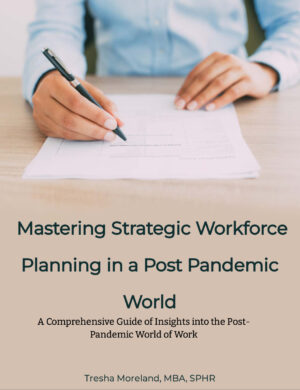Organizations all across the world found themselves in a precarious position in the wake of the global pandemic. The crisis caused a disruption in normal operations, which led to a major reevaluation of the procedures for strategic planning. It is clear that strategic planning needs to change in order to stay current and useful as we traverse the post-pandemic reality. This article examines how strategic planning needs to change in this new age of unpredictability and change.
1. Flexibility over Stability
Prior to the epidemic, many firms adhered to long-term strategy plans with strict deadlines and predetermined goals. The epidemic made these methods' shortcomings clear. Agility and adaptability should be prioritized in post-pandemic strategic planning. Organizations should adopt shorter, more adaptable strategies that can quickly pivot in response to unforeseen obstacles in place of multi-year plans.
2. The Usage of Scenario Planning
The pandemic served as a reminder of how crucial scenario planning is. Organizations that have thought through several situations were better prepared to react to unexpected changes. Scenario planning need to be a common practice in the post-pandemic environment since it enables firms to get ready for a variety of scenarios and make decisions that are well-informed despite the uncertainty.
3. Adopting a digital transformation mindset
The pandemic accelerated trends in digital transformation, forcing businesses to quickly adopt technologies for remote labor, e-commerce, and digital communication. To remain competitive and resilient in a world that is becoming more digital, post-pandemic strategic planning should give priority to continuous digital transformation activities.
4. Rethinking Risk Management
The epidemic highlighted the necessity of effective risk management techniques. Risk evaluation after a pandemic should cover environmental risks, global health issues, and cybersecurity dangers in addition to financial and operational risks. For organizations to proactively prevent and address new threats, risk management must be incorporated into their strategic planning.
5. Human-Centered Approaches
The pandemic brought attention to the value of employee engagement and well-being. The human-centric methods that promote a culture of adaptability, safety, and employee support should be given priority in post-pandemic strategy planning. Organizational strategies should be shaped primarily with the input and feedback of employees.
6. Workforce Planning
The workforce has and is changing rapidly. But often what is overlooked in the strategic planning process is conducting an environmental scan focused on the workforce and trends. Understanding migration patterns, supply and demand shifts, will help ensure that you’ve got a well-rounded strategic plan.
Mastering Strategic Workforce Planning in a Post-Pandemic World
Spread the loveIn an era defined by uncertainty, strategic workforce planning has never been more critical. "Mastering Strategic Workforce Planning in a Post-Pandemic World" is your indispensable guide to navigating the complexities of the modern workplace. This book, crafted for HR leaders, executives, and forward-thinkers, delves deep into the strategies and insights needed to build…
7. Supply Chain Stability
The epidemic revealed weaknesses in international supply chains. Organizations should give supply chain resilience top priority in their strategic planning after the pandemic. This may entail expanding the variety of suppliers, implementing technology to improve supply chain visibility, and creating backup plans in case of disruptions.
8. Participant Involvement
The pandemic brought to light how entwined corporations and communities are. Stakeholder engagement, including that of consumers, employees, suppliers, and local communities, should be a priority in post-pandemic strategic planning. Reputation may be improved and resilience can be increased through comprehending and addressing stakeholder needs.
9. Making Decisions Driven by Data
In the post-pandemic era, data-driven decision-making is even more important. In order to inform strategic decisions, track progress, and adjust strategies in real time, organizations should invest in data analytics and reporting capabilities.
10. Crisis management
The significance of crisis readiness was starkly underscored by the pandemic. To ensure a prompt, well-coordinated response to upcoming crises, thorough crisis management and communication plans should be included in post-pandemic strategy planning.
Finishing it off
Strategic planning needs to be reimagined for the post-pandemic world. Agility, scenario planning, digital transformation, risk management, human-centric strategies, sustainability, stakeholder involvement, data-driven decision-making, and crisis preparedness must be given top priority by organizations. Organizations may handle the shifting terrain with resilience, innovation, and a clear route to success by embracing these shifts. Strategic planning post-pandemic is a proactive strategy for thriving in a world marked by uncertainty and change rather than only reacting to change.
Latest posts by Tresha Moreland (see all)
- Building Trust in Uncertain Times: Strategies for Global Leaders - May 2, 2024
- Navigating Required Wage Increases: Strategies for Leaders in Tight Budgets - April 29, 2024
- Navigating Ethical Dilemmas in Organizations - April 28, 2024













